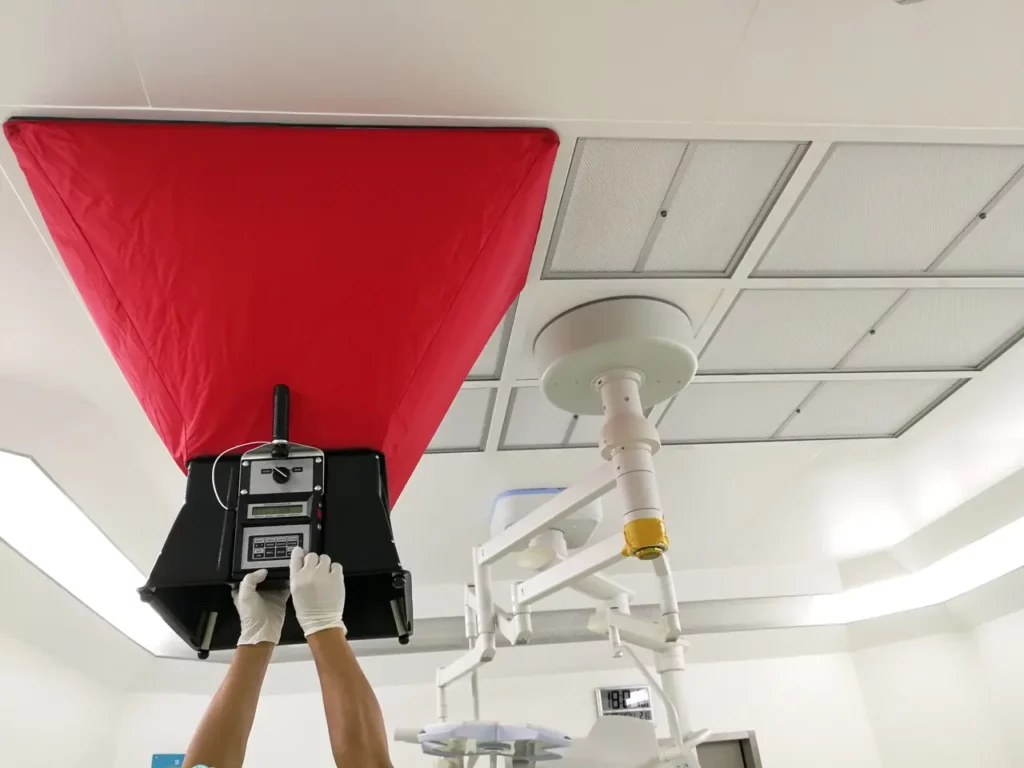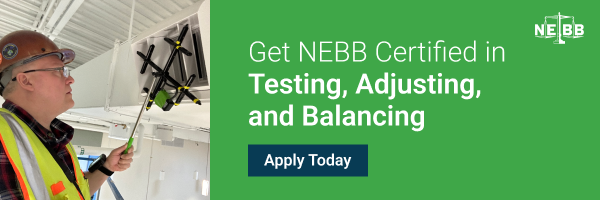
Although direct digital controls (DDC) has been the preferred technology for some time, there are many older offices and other facilities that have yet to completely shift over from pneumatic VAV terminals. More and more younger testing, adjusting, and balancing (TAB) technicians are encountering these older projects with pneumatic VAVs–and odds are they may have never worked on them in their short careers.
While this article could be a shot from the past for older technicians, the intention is to share decades of experience with pneumatic VAV terminals for the benefit of our younger, up and coming technicians to help them troubleshoot faster and better help their customers. Combining my own 6 years of HVAC design and 53 years of test and balance experience (actual field testing 30 years) with that of article peer reviewers Brian Kaupp, Eric Jenison, John Kneiss and Curtis Smart, this article can be considered a quick reference
guide stemming from over 150 years total experience.
Upon receiving that initial airflow or comfort complaint call, TAB technicians must get to work diagnosing the issue. When an area is too hot or too cold, it could be due to faulty control of the VAV box itself or the thermostat not being calibrated properly. To start with, there are some important things to know related to pneumatic controlled systems in general.
First, the technician should inspect the pneumatic compressor to ensure that it has been properly checked, tested, and started by the controls contractor. Most pneumatic control systems operate and control from 13 PSI to 20 PSI. And all pneumatic control systems should have a dryer installed to keep moisture out of the control lines. Because they are not as accurate as the digital control system to date, pneumatic VAVs require routine recalibration on an annual or biannual basis.
To determine whether the issue lies with the VAV terminal itself or the thermostat controls, there are a series of steps any experienced TAB technician will follow, taking into account the following information:
Pneumatic VAV Boxes
- Check and ensure that the pneumatic system thermostats, system static pressure controller, VAV boxes and all other controls are complete and have been initially checked, tested, and started by the Controls Contractor.
- Check to ensure that pneumatic control system pressure is operating to produce 13 PSI to 20 PSI throughout the system.
- Thermostat must be calibrated to control from roughly 8 PSI to 12 PSI.
- Mechanical VAV boxes would require adjusting by a locking collar on the shaft, on the pneumatic operator (normally minimum) and adjusting of the arm on the shaft of the VAV box (normally maximum).
- Adjustable pneumatic control boxes were installed on later VAV boxes, as the technology advanced, allowing adjustment of the min/max by a dial with a small flat edge screwdriver
Pneumatic Thermostat Controls
- Box controls can vary depending on the age of the system.
- Thermostat (Direct/Reverse Acting) – The calibration will vary from 3 PSI to 15 PSI, depending on the throttling range (reference attached pictures). Calibration of the thermostat is required to allow proper testing and adjusting of a pneumatic controlled VAV box.
Typically, customers with facilities full of pneumatic VAV boxes are already aware of the pitfalls of these systems. Since the big shift in the 1990s, we started to see more DDC terminals both due to lower costs and higher accuracy standards. In most cases, customers left with pneumatic VAVs, such as many schools and hospital buildings, just do not have the funds or downtime to be able to execute a full remodel to change out the existing terminals.
Upholding a higher standard and offering a more holistic solution than a singularly focused controls contractor, for example, a NEBB Certified Firm can help these facilities overcome common pitfalls such as:
Pneumatic VAV Boxes with Electric or HW Reheat Coils
When setting the minimum air volume using the thermostat: First set min air flow and next about one degree less, the electric or HW coil is to activate. When the thermostat goes out of calibration, this sequence can go crazy, with reheat on first before min flow or reheat not coming on until a few degrees below set point.
Pneumatic System Pressure Not Meeting a Constant PSI Throughout
This problem could be due to a system dryer problem, allowing moisture into the tubing. Oil in the system due to an old compressor and/or leaks in the pneumatic piping or tubing. As systems get older, all of the above could be the issue.
Comfort Issues
Comfort issues will require actually going to the problem area, checking the thermostat for calibration and/or going about the ceiling to the VAV box. With present DDC control systems, most adjustments and/or changes can be handled via site or off-site computer.
Pressure Dependencies in Older Pneumatic VAV Boxes
Early pneumatic VAV boxes were pressure dependent, therefore if system pressure changed from the original test and balance period, the box min/max CFM would change. Controlling consent system ductwork static pressure is a major item to always be checked first.
Later pneumatic VAV boxes came with flow sensing devices at the inlet, connected to a volume regulator. This allowed them to be system pressure independent. However, the main static pressure sensor still needs to maintain set pressure, requiring checking calibration, which normally controls fan inlet vanes.
Conclusion
In closing, TAB technicians of today faced with a pneumatic system can view pneumatic VAV boxes as opportunities rather than threats when armed with the right information and experience. Using the tips and tricks above, younger technicians can quickly become experts after working on about twenty pneumatic VAV boxes. Good luck to all who encounter old pneumatic VAV box systems!
